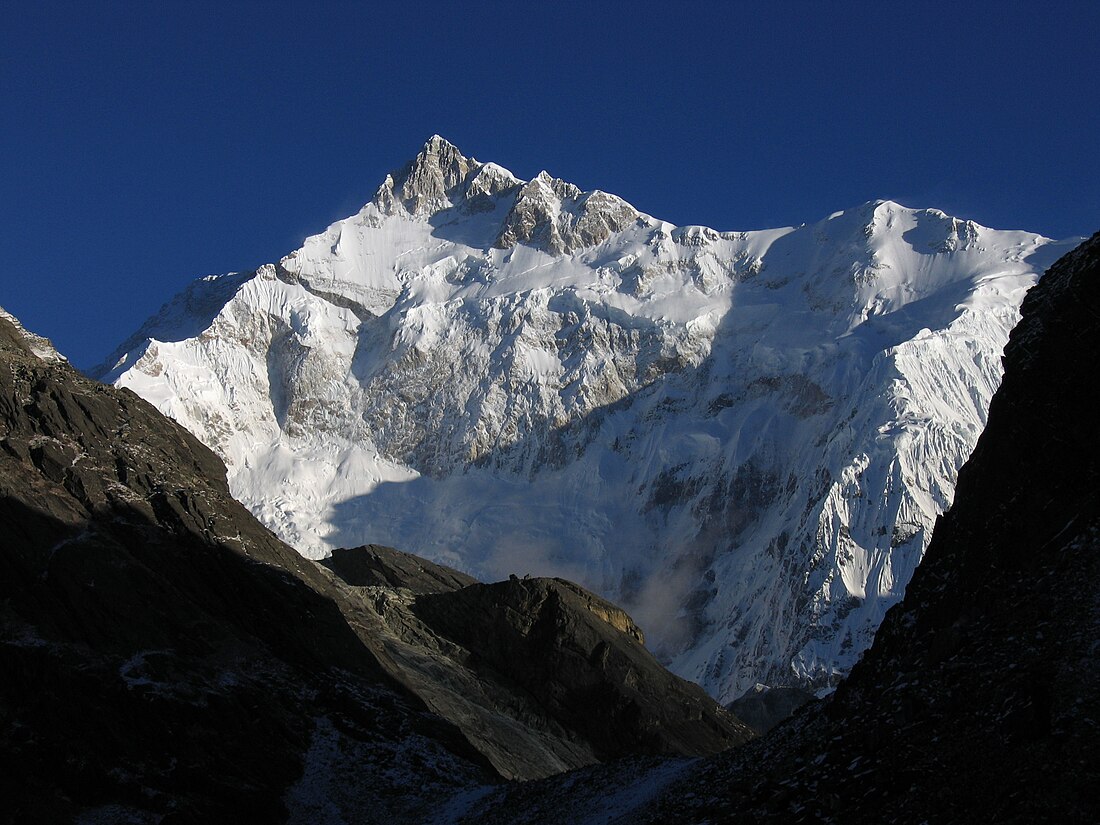Top Qs
Timeline
Chat
Perspective
Khangchendzonga National Park
Protected area and UNESCO World Heritage Site in Sikkim, India From Wikipedia, the free encyclopedia
Remove ads
Khangchendzonga National Park, also Kanchenjunga Biosphere Reserve, is a national park and a biosphere reserve located in Sikkim, India. It was inscribed to the UNESCO World Heritage Sites list in July 2016, becoming the first "Mixed Heritage" site of India.[1] It was included in the UNESCO Man and the Biosphere Programme. The park is named after the mountain Kangchenjunga, which is the third-highest peak in the world at 8,586 m (28,169 ft) tall. The total area of the park is 849.5 km2 (328.0 sq mi).
Remove ads
Remove ads
Geography

Khangchendzonga National Park covers an area of 849.50 km2 (327.99 sq mi) in Mangan district and Gyalshing district at an elevation of 1,829 m (6,001 ft) to over 8,550 m (28,050 ft). It is one of the few high-altitude national parks of India and was designated a mixed-criteria UNESCO World Heritage Site in July 2016.[2]
In the north, it adjoins Qomolangma National Nature Preserve in Tibet, and in the west Kanchenjunga Conservation Area in Nepal.[3]
Remove ads
Flora
The vegetation of the park include temperate broadleaf and mixed forests consisting of oaks, fir, birch, maple and willow.[2] Alpine grasses and shrubs occur at higher elevations along with many medicinal plants and herbs.[4]
Fauna
About 550 species of birds occur in the park including blood pheasant, satyr tragopan, osprey, Himalayan griffon, lammergeier, several species of green pigeon, Tibetan snowcock, snow pigeon, impeyan pheasant, Asian emerald cuckoo, sunbirds and eagles.[2] The dhole has been recorded by camera traps at elevations of 2,501–4,100 m (8,205–13,451 ft).[5]
References
External links
Wikiwand - on
Seamless Wikipedia browsing. On steroids.
Remove ads



